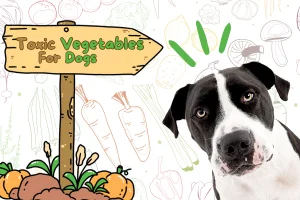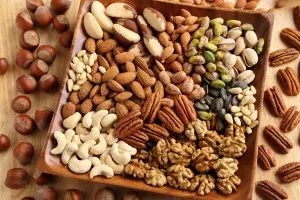How Much Should a Dog Eat? The Ultimate Feeding Guide
Published: 14 Jan 2025
How Much Should I Feed My Dog?
On average, adult dogs need about 2% to 3% of their ideal body weight in food daily. Puppies often need 4% to 6% of their expected adult weight to support growth. Older dogs may require 1% to 2% of their body weight per day to prevent weight gain.
Which Factors Affect the Portion Size of Food Your Dog Needs
The food needs of a dog can vary based on several factors:
- Age: Puppies need more calories and proteins for growth, while adult dogs need steady maintenance. Senior dogs may need fewer calories, especially if they are less active.
- Weight: Larger dogs require more food than smaller dogs, but the food type and activity levels also affect their calorie consumption.
- Activity Level: Dogs that are more active (such as working dogs or playful pups) burn more calories and require a higher calorie intake than sedentary dogs.
- Type of food: Kibbles are dense and contain more calories than wet, semi-moist dog food or raw food.
- Breed-Specific Needs: Some breeds, like working dogs or those with high metabolism (e.g., Border Collies), require more calories. Conversely, breeds prone to obesity (e.g., Bulldogs) may need fewer calories.
- Health Status: Dogs that are recovering from illness, pregnant, or nursing require extra food to support healing, growth, or milk production.
- Spaying or Neutering: Spayed or neutered dogs may have a slightly lower metabolic rate, requiring less food to maintain weight
How Much Should a Puppy Eat?
Most puppies need to eat 4–6% of their expected adult body weight daily in food (wet or dry). Feeding your puppy the right amount helps keep their bones strong, energy high, and body healthy.
Puppy Feeding Chart by Age and Weight
| Estimated Adult Weight | 2–3 Months | 4–5 Months | 6–8 Months | 9–10 Months | 11–12 Months |
|---|---|---|---|---|---|
| 3–12 lbs (Toy Breeds) | ½ – ¾ cup | ¾ – 1 cup | ⅔ – 1 cup | ½ – ¾ cup | Adult portions |
| 13–20 lbs (Small Breeds) | ⅔ – 1 cup | 1 – 1½ cups | ¾ – 1⅓ cups | ¾ – 1 cup | Adult portions |
| 21–40 lbs (Medium Breeds) | ¾ – 1¼ cups | 1¼ – 2 cups | 1 – 2¼ cups | 1¼ – 2½ cups | 2 – 2¾ cups |
| 41–65 lbs (Large Breeds) | 1 – 2 cups | 2 – 3 cups | 2 – 3½ cups | 2½ – 4 cups | 3 – 4¼ cups |
| 66–90 lbs (XL Breeds) | 1½ – 2½ cups | 2½ – 4 cups | 3 – 4½ cups | 3½ – 5¼ cups | 4½ – 6 cups |
| 91+ lbs (Giant Breeds) | 2½ cups + ¼ cup per 10 lbs over 90 | 4 cups + ¼ cup per 10 lbs | 4½ cups + ¼ cup per 10 lbs | 5¼ cups + ¼ cup per 10 lbs | 6 cups + ¼ cup per 10 lbs |
Always adjust amounts based on your puppy’s energy level, body shape, and brand of food (check calories per cup!). For a custom plan, speak with your vet or a certified canine nutritionist.
How Much Should an Adult Dog Eat?
As mentioned above, adult dogs typically require around 2% to 3% of their ideal body weight in food each day to stay healthy and maintain a stable weight.
Adult Dog Feeding Chart by Age and Weight
| Dog Weight | Age 1–3 Years | Age 4–5 Years | Age 6–7 Years |
|---|---|---|---|
| 5–10 lbs | ¾ to 1 cup | ¾ to 1 cup | ⅔ to ¾ cup |
| 11–25 lbs | 1 to 1½ cups | 1 to 1½ cups | 1 to 1¼ cups |
| 26–50 lbs | 2 to 2¾ cups | 2 to 2½ cups | 1¾ to 2¼ cups |
| 51–75 lbs | 3 to 4 cups | 2¾ to 3½ cups | 2½ to 3 cups |
| 76–100 lbs | 4½ to 5¾ cups | 4 to 5½ cups | 3¾ to 5 cups |
| 101+ lbs | 6 to 7 cups | 5½ to 6½ cups | 5 to 6 cups |
How Much Should a Senior Dog Eat?
Generally, senior dogs should be fed about 1% to 3% of their ideal body weight per day due to reduced activity levels and a slower metabolism.
Senior Dog Feeding Chart by Age and Weight
| Dog Weight | 7-10 Years Old | 10+ Years Old |
|---|---|---|
| 5–10 lbs | ⅔ to ¾ cup | ½ to ⅔ cup |
| 11–25 lbs | 1 to 1¼ cups | 1 cup |
| 26–50 lbs | 1¾ to 2¼ cups | 1½ to 2 cups |
| 51–75 lbs | 2½ to 3 cups | 2¼ to 2½ cups |
| 76–100 lbs | 3¾ to 4¼ cups | 3½ to 4 cups |
| 101+ lbs | 5 to 6 cups | 4½ to 5½ cups |
How Would You Determine the Right Amount of Food for Your Dog?
After reading all the information above, you might think, “That’s just a general guideline. How would I know what my dog needs?” The best way to determine the right amount of food for your dog is by following a few simple steps:
Use a Dog Calorie Calculator:
A dog calorie calculator can help you estimate your dog’s daily calorie needs. Simply input details like their weight, age, activity level, and sex to get accurate results. Then, compare this with the calories listed on your dog’s food packaging to determine the correct serving size.
Refer to Feeding Guidelines:
Check the feeding chart on your dog’s food packaging. These charts provide an estimate of how much to feed your dog based on their size, age, and weight, offering a good starting point.
Consult Your Veterinarian:
If you’re unsure how much food your dog needs, consult your vet. They can offer personalised advice based on your dog’s specific needs, especially if it has unique health concerns like pregnancy or illness recovery.
Learn “How Often Should a Dog Eat” in our comprehensive guide.
Why the Right Portion Size Matters?
Feeding your dog the correct portion size is key to their overall health. It provides the following benefits:
- Prevents Obesity
- Ensures Proper Nutrition
- Boosts Energy and Vitality
- Promotes Longevity
- Supports Digestive Health
Signs Your Dog’s Portion Needs Adjustment
As a vet, many pet owners ask me, “How can I tell if my dog’s portion size needs to be increased or decreased?” I tell them, “Knowing when to adjust portion sizes comes down to observing your dog’s behaviour, appearance, and overall well-being.”
Signs You May Need to Increase Portion Sizes
- Weight Loss
- Constant Hunger
- Low Energy
- Poor Coat Condition
- Small or Infrequent Stools
Signs You May Need to Decrease Portion Sizes
- Weight Gain
- Soft Stools or Diarrhoea
- Vomiting After Meals
- Lack of Interest in Meals
- Excessive Thirst
Adjusting portion sizes based on these signs will help your dog stay happy, healthy, and full of life. Always consult your veterinarian before making significant changes to your dog’s diet to meet its specific needs.
Conclusion
Your problem, “ How much should I feed my dog?” has been solved, guys.
Finding the right amount to feed your dog isn’t just about numbers—it’s about understanding their unique needs. Every dog is different, so take the time to observe their energy levels, weight, and overall behaviour.
I recommend creating a daily feeding routine tailored to your dog’s activity level and lifestyle. Start with smaller portions, monitor your dog’s weight and energy, and adjust gradually. Regular walks and play sessions can also help you gauge your dog’s energy needs.
If you’re unsure, your vet can provide tailored advice to meet your dog’s specific requirements. Remember, a well-fed dog is a happy and healthy companion!
Do you have a feeding routine for your dog? Share your experience in the comments!
FAQs
Let’s discuss some frequently asked questions about how much a dog should eat.
Free-feeding can lead to overeating and weight gain, especially for dogs without self-control. Scheduled meals are better for monitoring portion sizes and establishing a routine.
When viewed from above, you should be able to feel your dog’s ribs without excess fat and see a visible waist. If you are unsure, ask your vet to perform a body condition assessment.
Check the calorie content on the packaging of each food type, calculate the total based on the portion sizes you’re mixing, and ensure it matches your dog’s daily calorie needs.
First, rule out medical issues or dental problems. If your dog is healthy, try warming the food, switching to a different flavour, or adding a safe topper to make it more appealing.

- Be Respectful
- Stay Relevant
- Stay Positive
- True Feedback
- Encourage Discussion
- Avoid Spamming
- No Fake News
- Don't Copy-Paste
- No Personal Attacks

- Be Respectful
- Stay Relevant
- Stay Positive
- True Feedback
- Encourage Discussion
- Avoid Spamming
- No Fake News
- Don't Copy-Paste
- No Personal Attacks





